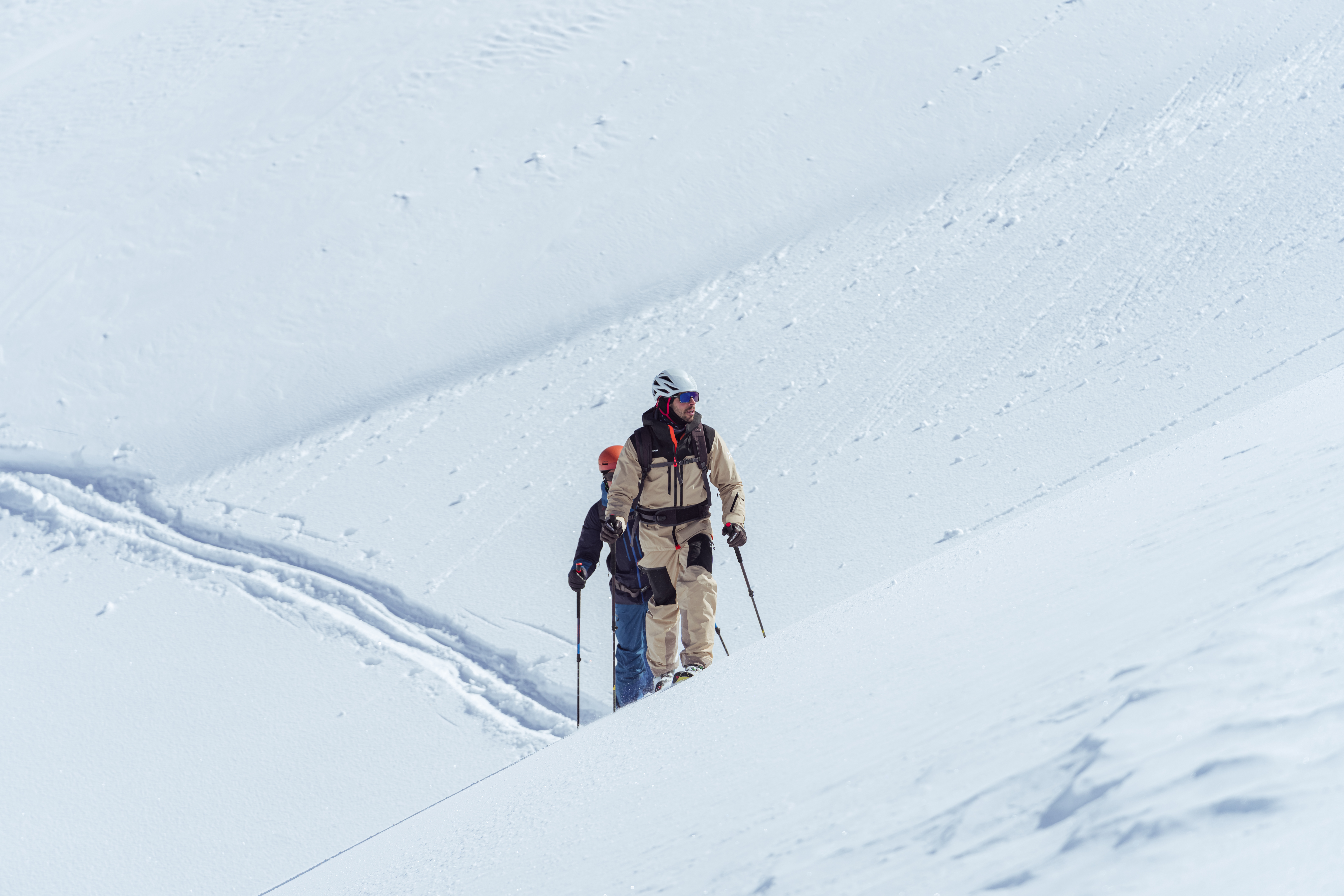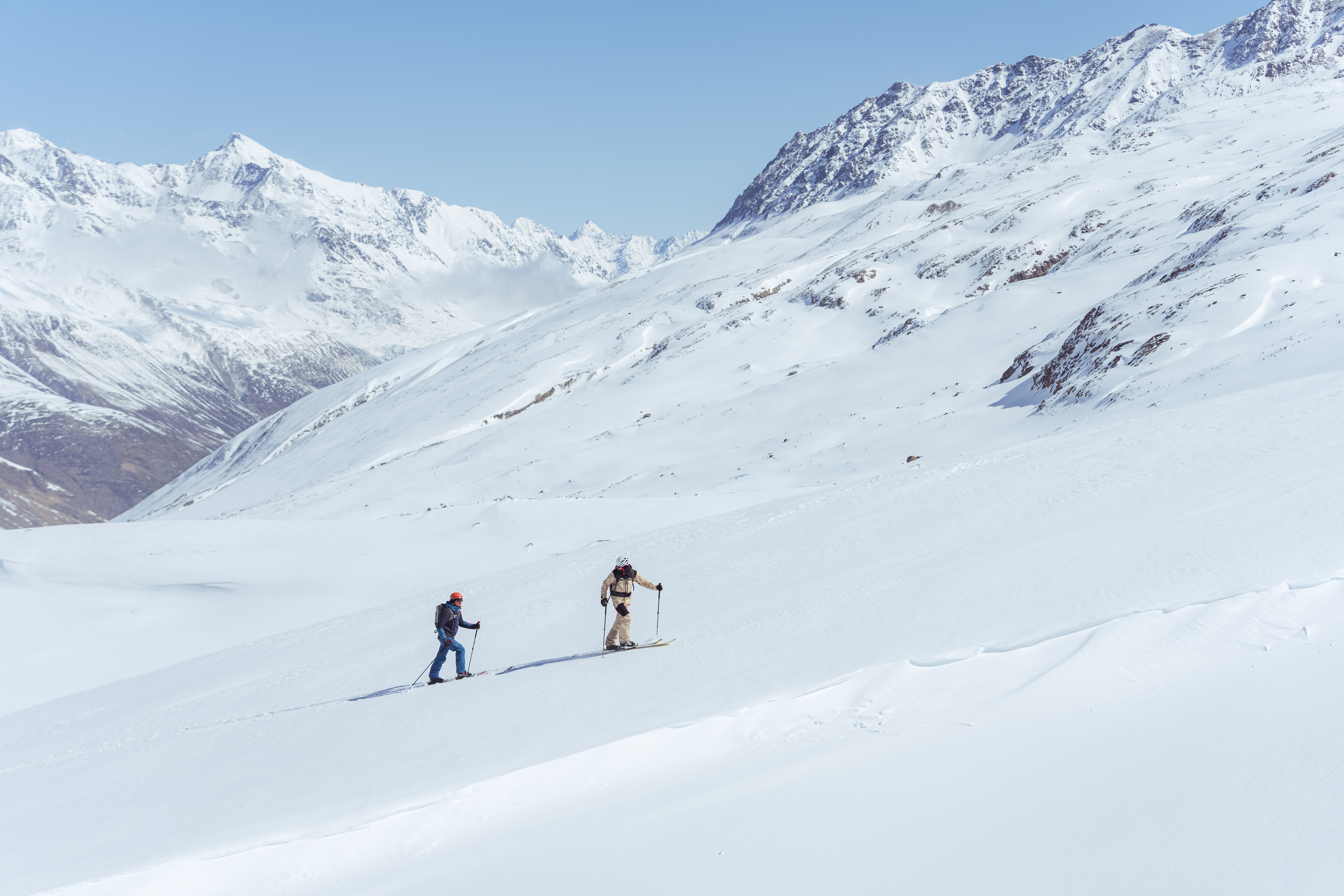Those who love the mountains but are looking for something other than skiing on the slopes could try ski touring, a discipline that allows direct and genuine contact with nature.
Ski toruing consists of ascending the slopes of a mountain with skis on your feet and poles in hand, and then descending into the deep snow, off the normal pistes.
For many, ski touring is freedom. You are away from it all, you don’t use lifts and you experience the mountains to the full. In fact, this discipline allows you to completely immerse yourself in nature and enjoy snow-covered trails and breathtaking views slowly.
In this guide you will find tips for getting started relating to three extremely important topics: training, equipment and safety.
The differences between ski touring and alpine skiing
Ski touring and alpine skiing are two different ways of experiencing the mountains, although both involve skiing. In ski touring, which is more oriented towards exploration and contact with nature, you ascend and descend the mountain on skis: you need light skis, boots with soles suitable for the ascent, and a range of skills relating to orientation and avalanche danger assessment. Training is crucial for risk management in alpine environments.
Alpine skiing, on the other hand, takes place on prepared slopes, using bindings that lock the skis for the descent. It is characterised by speed, technical manoeuvres and the use of ski lifts to reach the slopes. Skis are heavier and boots stiffer for maximum precision in turns.
What is ski touring
Ski touring is an activity that is gaining many new admirers, and consists of venturing up and down on skis along marked or off-piste routes. Unlike alpine skiing, ski touring is not simply a physical and sporting practice, but a real activity of hiking in the snow. This discipline, in fact, allows you to completely immerse yourself in nature and enjoy the snow-covered paths and breathtaking views that only the mountains can offer, in total relaxation. A true panacea for body and mind.
From a physical point of view, it is a very demanding activity, especially if you do not have the right training. The muscles of the legs, arms and torso are stimulated a lot, but the silence of the completely snow-covered nature, the thrill of reaching the top and the thrill of the final descent on the snow repay the effort.
For it not to become dangerous, ski touring requires the right amount of athletic training, mountain knowledge and experience. This is why a beginner wishing to approach this discipline must be prepared to follow a specific course of action that includes perseverance, prudence and a willingness to learn.
In order to approach the mountain with awareness and as much safety as possible, it is recommended to attend training courses to learn about climbing techniques, risk management, assessing snow conditions and safety techniques. It is equally important to be accompanied on hikes by experienced mountain guides.
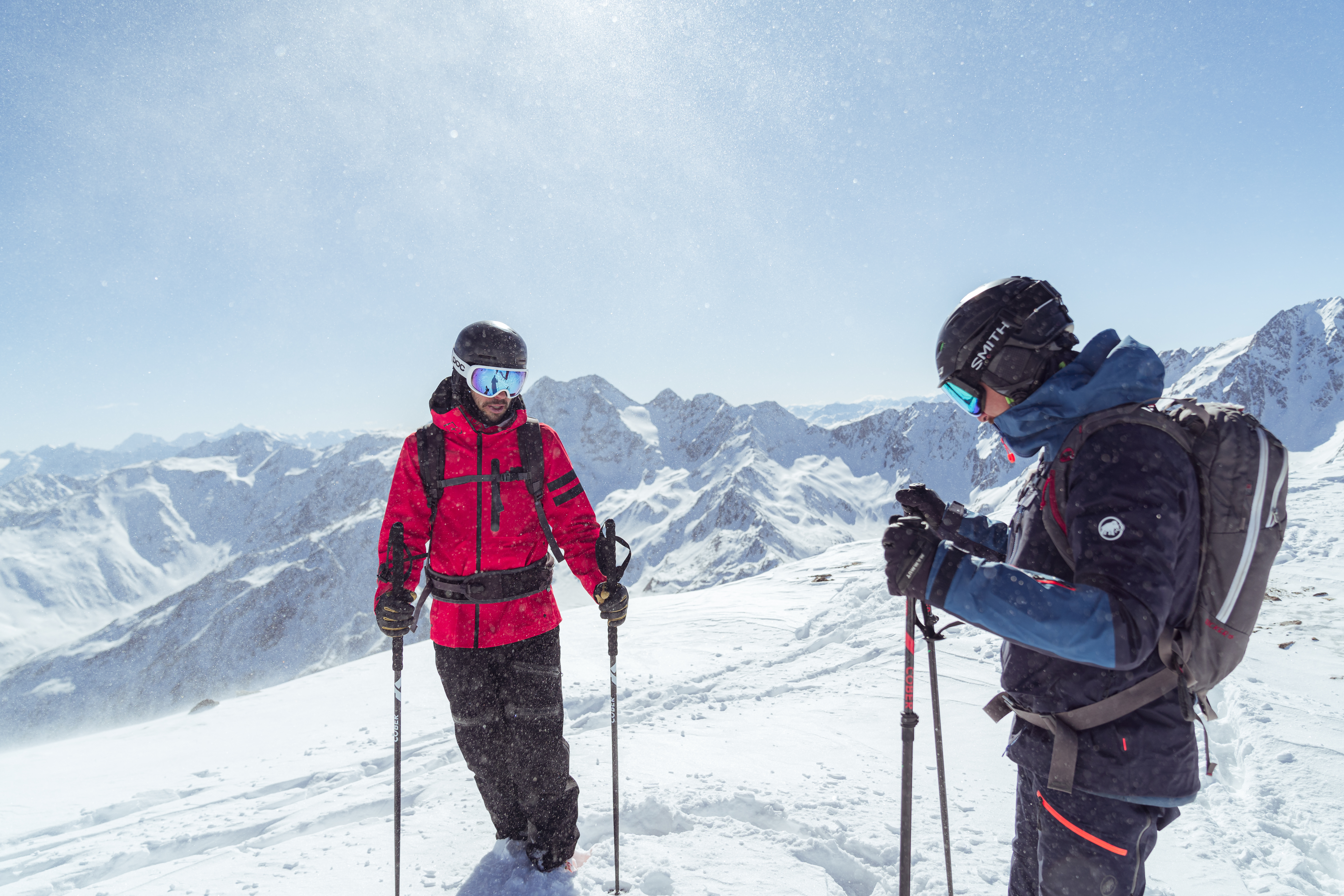
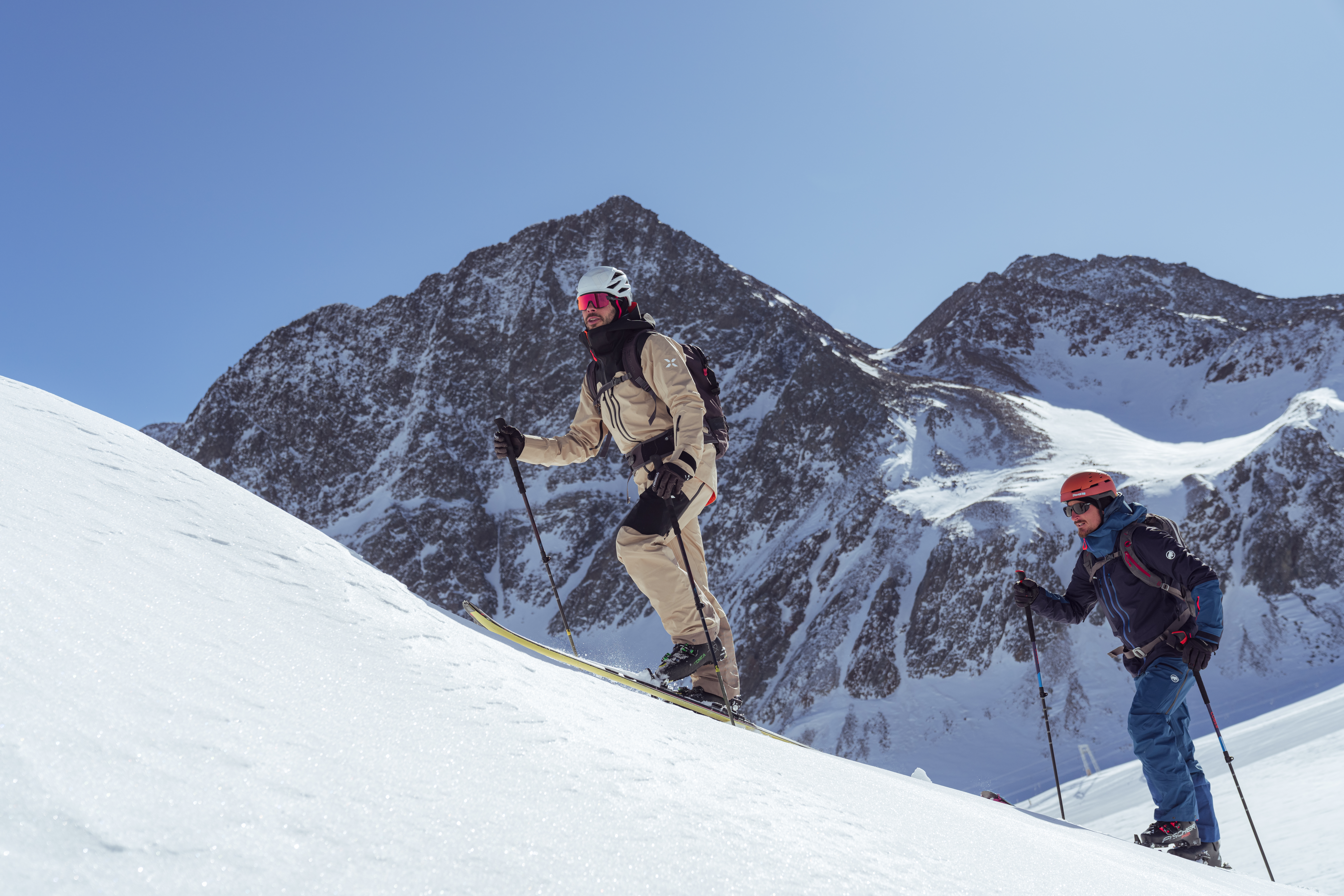
Technical training.
Ski touring presupposes a solid base of downhill skiing. It may seem obvious, but in order to start ski touring, one must at least know how to ski fairly well on-piste. A correct setup and good ski control on-piste will also help enormously in off-piste skiing. It must be emphasised that, during their first outings, even good skiers can struggle to adapt to the different snow conditions that can be found off-piste. Knowledge of descent techniques, off-piste skiing manoeuvres and ski control are useful for first experiences.
Ski touring requires good knowledge of the mountain. Itineraries should be planned in advance by paying attention to the weather and the avalanche bulletin, which can be consulted on Aineva or Meteomont, for example. In any case, it is better to start with itineraries that are already known and travelled in the summer. We always recommend, for all outings, to rely on experienced mountain guides.
Physical training.
Good basic physical training will help you to cope better with the fatigue of the first outings, especially if you do not yet have a good ascent and descent technique. A good way to prepare for your first outings is to hike briskly on mountain trails or take mountain bike rides of a few hours in the hills or mountains.
When to start.
The recommended age to start can vary, although good physical and technical maturity is preferable, usually reached in adolescence or adulthood. The winter season, with stable snow and safe slopes, is a favourable environment to try ski touring. It is important to start with simple routes and progress gradually as you gain experience and master the techniques. It should never be forgotten that this sport involves risks related to snow conditions, avalanches, and mountainous terrain, and it is therefore essential to acquire knowledge on hazard assessment and the use of safety equipment such as the Artva (avalanche transceiver).
For beginners on these hikes, it is preferable always to move at least in twos, to avoid particularly steep or exposed slopes, or to move in avalanche-prone areas. If, on the other hand, you want to hone your technique without going into the woods or untracked stretches, you can start with ski touring. In fact, in some ski resorts, it is possible to ascend a marked route and then descend using the slopes.
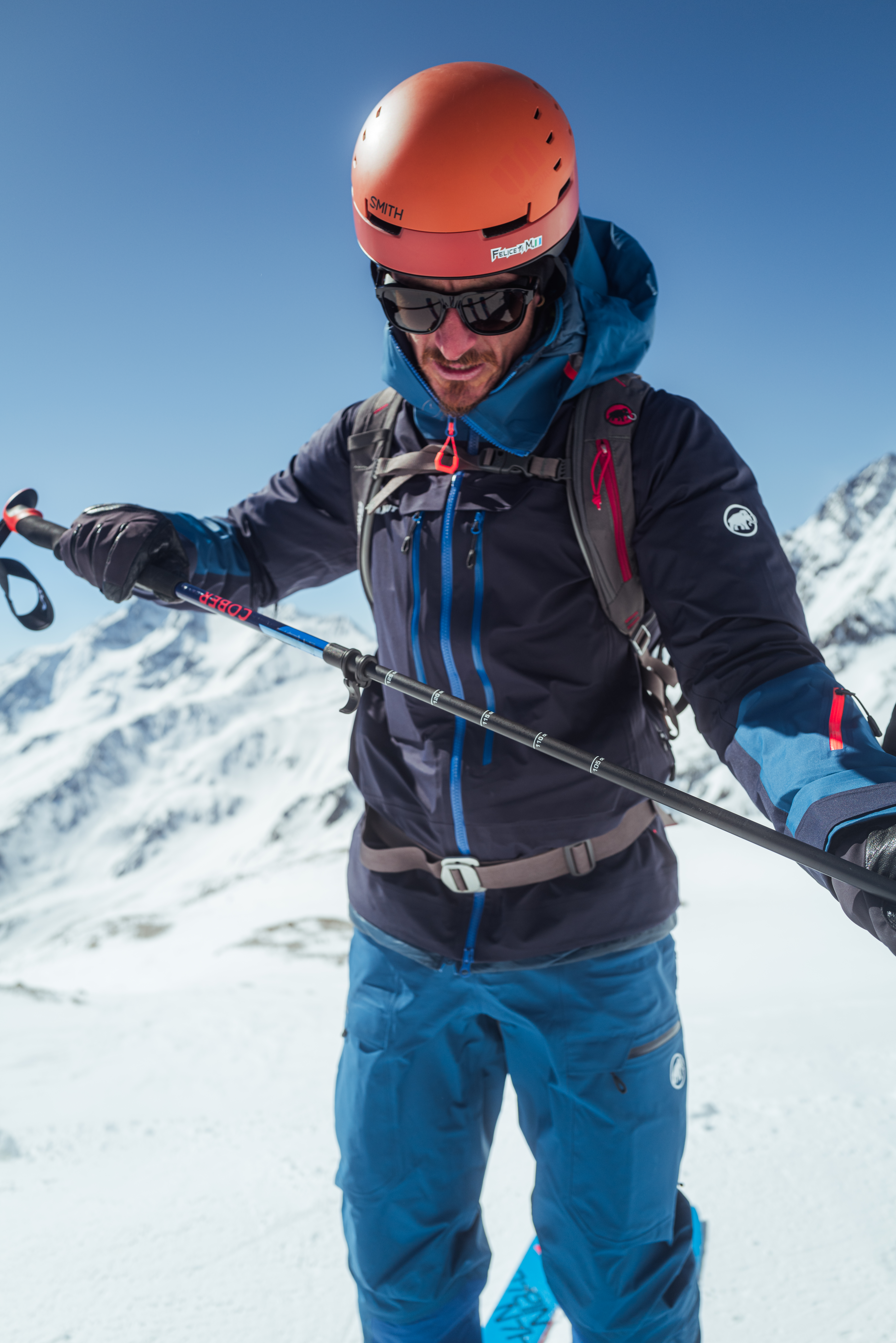
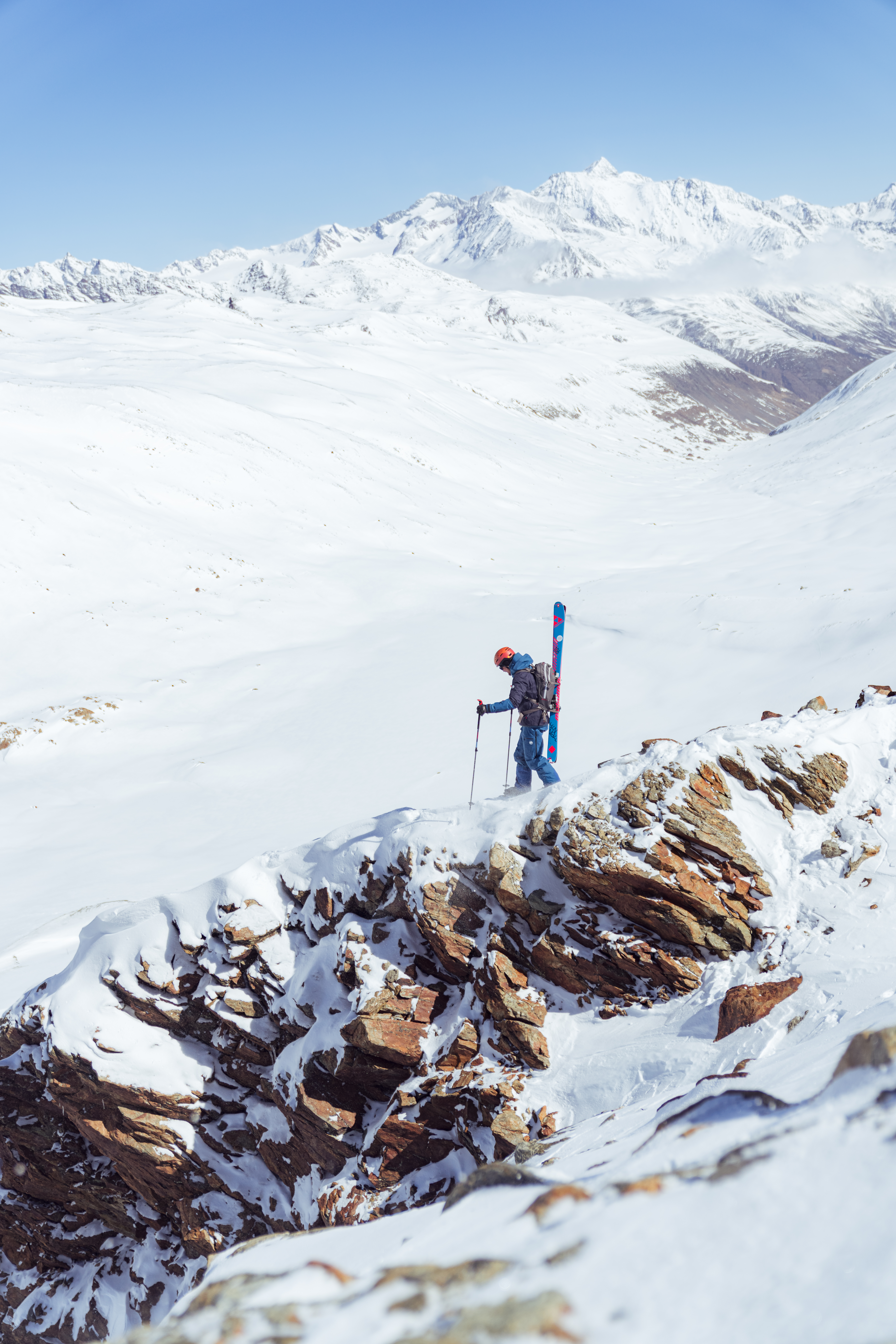
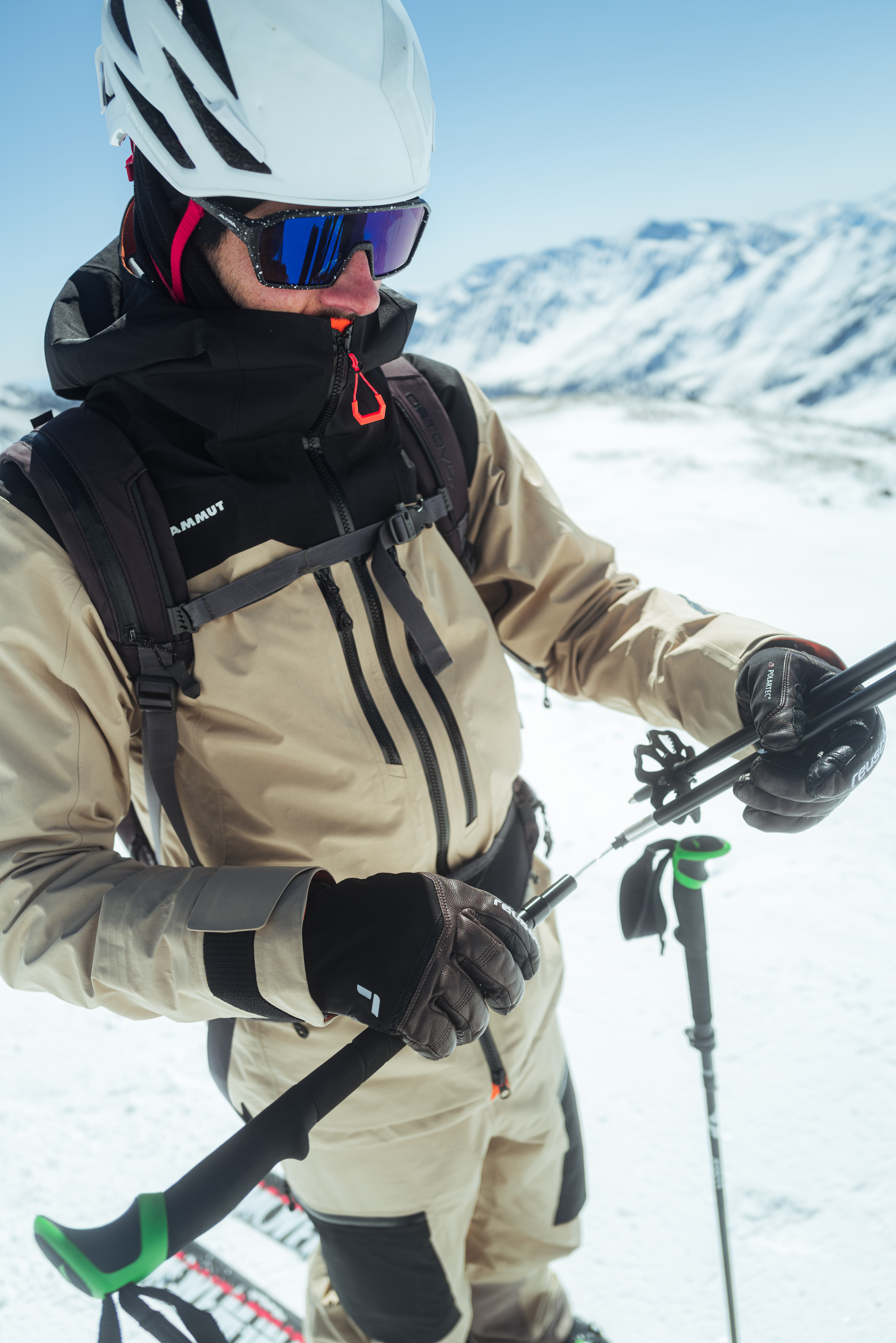
Equally essential is the equipment: light, easy-to-handle skis, ski boots with soles suitable for ascents, specific bindings for ascents and adjustable ski poles, preferably with a long grip.
Skis used for ski touring are different from those used for on-piste skiing. They are usually wider, to ensure better stability on fresh snow, and have bindings that allow the heel to be released during the ascent. Synthetic skins are attached under the skis for easy ascending without slipping back.
In addition to skis, the choice of poles is very important so that you have the right support. On the ascent they help you push yourself and are also important on the descent in powder snow for changes of direction. Poles, like skis, are also specific to this discipline. Those of Cober, which has a wide range dedicated to ski touring, all have a double grip to be more functional. They can be fixed or adjustable, and are very durable.
There are also backpacks made especially for ski touring with the possibility of attaching skis in technical sections or at the end of the route. Inside there will be room for crampons to use on icy passages, a helmet, a jacket and an extra pair of gloves, food supplies, a water bottle and a head torch. The main advice, however, is to dress light and in layers. Classic ski suits are no good because they are too heavy for the ascent.
Those who practice ski touring tell us that this sport offers sensations of freedom and adrenaline with few equals. Fresh snow, wind and sunshine are the best companions for ski tourers from the beginning of winter until March, when the days get longer and the snow becomes optimal. To have fun, however, you need to pay even more attention to your own safety and that of others.
Ski touring is a complex sport where you cannot underestimate the natural elements that are independent of your own preparation. That is why it is important to plan your outings carefully, assess the snow and weather conditions, and inform yourself about the dangers of the terrain.
As of 2022, it is mandatory to carry an Artva (avalanche transceiver), shovel and probe when going ski touring. The Artva, through electromagnetic waves, makes it possible to locate someone who is under the snow; the avalanche shovel, thanks to its shape, makes it possible to dig quickly, while the probe (a telescopic cylinder made of aluminium or carbon) makes it possible to measure the depth at which someone is under the snow.
Participating in mountain safety courses, which include sessions on the use of these tools, is highly recommended to develop the skills needed in emergency situations.
